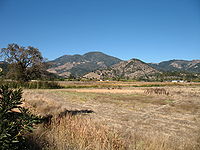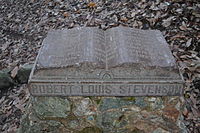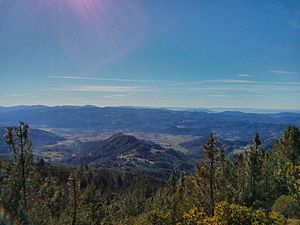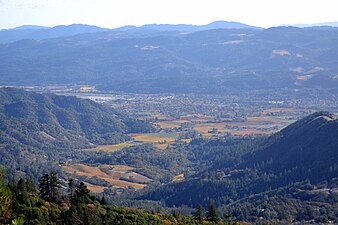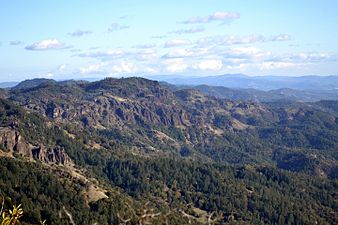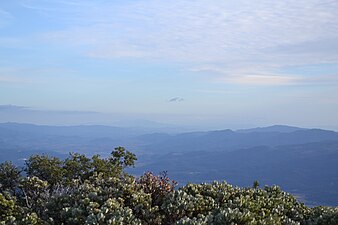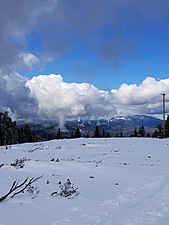| Mount Saint Helena | |
|---|---|
 Mount Saint Helena, viewed from northern Napa Valley | |
| Highest point | |
| Elevation | 4,342 ft (1,323 m) NAVD 88 [1] |
| Prominence | 1,823 ft (556 m) [2] |
| Listing | California county high points 44th |
| Coordinates | 38°40′10″N122°38′01″W / 38.669340858°N 122.633487528°W [1] |
| Geography | |
| Parent range | Mayacamas Mountains |
| Topo map | USGS Mount Saint Helena |
| Climbing | |
| Easiest route | Hiking trail [3] |
Mount Saint Helena (Wappo: Kanamota, "Human Mountain") [4] is a peak in the Mayacamas Mountains with flanks in Napa, Sonoma, and Lake counties of California. Composed of uplifted volcanic rocks from the Clear Lake Volcanic Field, it is one of the few mountains in the San Francisco Bay Area to receive any snowfall during the winter.
Contents
The mountain has five peaks, arranged in a rough "M" shape. Its highest point, North Peak, is in Sonoma County. The second-tallest, immediately east of the main summit, is the highest point in Napa County. [5] The headwaters of the Napa River arise on the southeast slope of Mount Saint Helena. [6] [7]


